Tummy Tuck in Austria
Search and Compare the Best Clinics and Doctors at the Lowest Prices for Tummy Tuck in Austria

Find the best clinics for Tummy Tuck in Austria
No pricing info available
Czech Republic offers the best prices Worldwide
Price: $ 76
Leech Private Clinic, located in Hugo Wolf Gasse, Graz, Austria offers patients Tummy Tuck procedures among its total of 47 available procedures, across 11 different specialties. Currently, there's no pricing information for Tummy Tuck procedures at Leech Private Clinic, as all prices are available on request only. All procedures and treatments are undertaken by just a small team of specialists, with 2 in total at the Clinic, and they are accredited by ISO 9001:2008
Premium Health Solutions - Austria, located in Heiligenstaedter Str, Vienna, Austria offers patients Tummy Tuck procedures among its total of 53 available procedures, across 18 different specialties. Currently, there's no pricing information for Tummy Tuck procedures at Premium Health Solutions - Austria, as all prices are available on request only. There is currently a lack of information available on the specialists practicing at the Hospital, and they are not accredited by any recognized accreditations institutes
Univ Prof Dr Edvin Turkof, located in Heiligenstaedter Str, Vienna, Austria offers patients Tummy Tuck procedures among its total of 15 available procedures, across 1 different specialties. Currently, there's no pricing information for Tummy Tuck procedures at Univ Prof Dr Edvin Turkof, as all prices are available on request only. All procedures and treatments are undertaken by the lead specialist at the Hospital, and they are not accredited by any recognized accreditations institutes
- Home
- Austria
Compare Before & After Photos of _procedure_photos.phpTummy Tuck
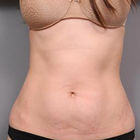
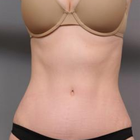
Front view
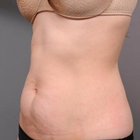

Half-side view
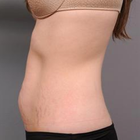
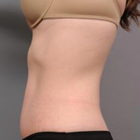
Full-side view
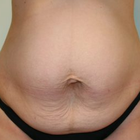
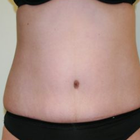
Front view
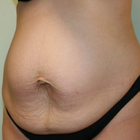
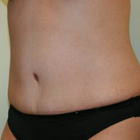
Half-side view

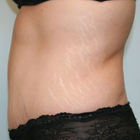
Full-side view


Full-side view
WHY US?
At Medijump, we're making medical easy. You can search, compare, discuss, and book your medical all in one place. We open the door to the best medical providers worldwide, saving you time and energy along the way, and it's all for FREE, no hidden fees, and no price markups guaranteed. So what are you waiting for?

Free

Best Price

Widest Selection

Risk-Free
What you need to know about Tummy Tuck in Austria

Also known as abdominoplasty, a tummy tuck is a surgical procedure to create a toned, firm, and flat abdomen by removing excess skin and fat. It has both cosmetic and medical benefits as it can tighten the abdominal muscles, restore the contour of the belly, improve posture, correct hernia, and reduce stress urinary incontinence.
A tummy tuck is suitable for people who want to remove excess skin due to a significant weight loss, aging, or pregnancy. However, not everyone can undergo the procedure. Your surgeon may not allow you to undergo the procedure if you plan to lose a significant amount of weight, you might want to get pregnant in the future, have a body mass index (BMI) that is greater than 30, smokes, have a severe chronic condition, and had an abdominal surgery that caused scar tissue in the past.
What is the cost of Tummy Tuck in Austria?
The price of a Tummy Tuck within Austria primarily hinges on several elements such as the operating doctor's expertise and credentials, hospital selection, and the intricacies of the operation. It could also fluctuate based on your distinct objectives and the degree of surgical intervention required. Ensure you clarify with your clinic if the cited price includes all facets of patient care, from the initial consultation to follow-up appointments.
Engaging in open conversations with your healthcare provider about the all-inclusive costs is essential. Typically, health insurance won't cover aesthetic surgeries like Tummy Tuck. However, they may partially or completely shoulder the cost if the procedure aims to address health issues such as hernias or skin conditions caused by surplus skin. Hence, a comprehensive discussion with your insurance provider about this matter is absolutely crucial.
What does a Tummy Tuck Procedure Involve?
A tummy tuck procedure will get rid of some of your excess skin and fat and will tighten the muscles in your abdominal wall.
What you need to understand is that a tummy tuck procedure is not an alternative for weight loss or an appropriate exercise program. While its results are significantly permanent, maintaining a positive outcome will require you to have a healthier lifestyle.
Furthermore, this type of treatment procedure is not the same as liposuction. A tummy tuck is a major surgery and not all individuals who wish to undergo it are good candidates. Generally speaking, this specific type of treatment procedure is for both men and women who are in good health. This is also suitable for women who have had more than one pregnancy, as well as both men and women who were formerly obese and still have excess fat and loose skin around their belly area.
You will be advised to postpone your plans for a tummy tuck procedure if you are:
- Planning to get pregnant - you may want to consider it once you’re done having children. A tummy tuck tightens your vertical muscles and future pregnancies may separate those muscles.
- Planning to lose weight - tummy tuck should be done after weight loss.
In preparation for a tummy tuck procedure, you will need to have a consultation with your surgeon. During your consultation, you will be asked about your expected result, goals. Furthermore, your surgeon will also discuss the following options:
- Partial abdominoplasty (Mini abdominoplasty) - this is for those people who have fat deposits below their navel area. This type of tummy tuck procedure usually lasts about two hours, depending on the case.
- Complete abdominoplasty - With this type of tummy tuck surgery, an incision is usually from hip bone to hip bone following the contouring of skin, tissue, and muscle as needed. It will also be required to move the patient’s belly button; patients must also have tube drainage under their skin for a few days.
Before your actual surgery, you may be asked to do the following:
- Quit smoking two weeks before and two weeks after your surgery.
- Eat well balanced complete meals.
- Stop taking certain medications before and after your surgery (prescription drugs, herbal medicines, and supplements)
A tummy tuck procedure typically lasts for about one to five hours, depending on your case. You will also be given general anesthesia while you undergo the surgery, meaning, you will be asleep during the whole procedure.
How Long Should You Stay in Austria?
Depending on the extent of your tummy tuck, you may need to stay in the hospital overnight or leave the hospital on the same day. However, since you have to attend follow-up checkups and allow your body to heal, you have to stay in Austria for at least 7 days following your discharge from the hospital. Your surgeon will check your overall health and remove the stitches during the follow-up checkups.
What's the Recovery Time for Tummy Tuck Procedures in Austria?
The recovery period after a tummy tuck depends on various factors, such as your general health, body weight, and age. In general, you may be able to go back to work (if your job does not require a lot of physical activities) and perform light exercises (such as walking) within 2 to 3 weeks after the surgery. You may need to wait for about 6 to 8 weeks until you can go back to your full normal routine, including performing vigorous activities. Still, your body will continue to heal for a few more months, so it’s better to take it easy until your surgeon allows you to return to your full activity.
What sort of Aftercare is Required for Tummy Tuck Procedures in Austria?
Your surgeon will give you detailed aftercare instructions. To avoid any complications, it is important that you follow them closely. The instructions may include restrictions (such as staying away from alcohol and nicotine), light exercises, and a healthy diet. Your surgeon will also tell you how to find an optimal resting position to make you comfortable during recovery. It is important to keep moving and doing some light exercise after the surgery to keep your blood flowing and reduce the risk of a blood clot.
To maintain the results of your tummy tuck, you need to maintain a well-balanced diet and exercise regularly, at least about 30 to 60 minutes every day. You should also limit your alcohol intake. Staying fit and in shape is the main key to keeping the results for a long time.
What's the Success Rate of Tummy Tuck Procedures in Austria?
Most patients who have had a tummy tuck reported that they achieve positive results.The Tummy Tuck has exhibited a noteworthy record of success, with a plethora of patients revealing remarkable enhancements in self-concept and perception of physical appearance following the procedure. Nonetheless, it's crucial to harbor genuine prospects and apprehend that the outcomes of the procedure may not always be as anticipated, as they hinge on personal factors such as body framework, genetic inclinations, and lifestyle habits such as exercise and alimentation.
The proficiency of the surgeon and the facilities of the clinic where the procedure transpires greatly influences the success rate. Another pivotal success determinant should be the satisfaction of the patients with the outcomes. Hence, patients are motivated to actively participate in the decision-making procedure, sharing their aspirations and receiving feedback on attainable results.
Only about 3.1% of people developed complications following the surgery.
Are there Alternatives to Tummy Tuck Procedures in Austria?
While there are non-surgical options that can be considered as an alternative to this type of treatment procedure, it's important to remember that these alternatives will not give you the same results as a tummy tuck. These non-surgical alternatives only give off limited amounts of skin tightening and a small amount of non-surgical fat reduction.
CoolSculpting - in this procedure, your fat cells will be frozen and eventually be eliminated by your body. You will usually see results after a few weeks and its final effects will be shown typically within three months.
SculpSure - unlike CoolSculpting, SculpSure makes use of laser beam light to kill your fat cells. During the procedure, the laser will be used to heat the fat cells to a point of irreversible damage. Once your fat cells are damaged, they will eventually be swept away by your body’s lymphatic system. This procedure is particularly great for the upper and lower abdominal area, as well as flanks. Little to no recovery time is needed, and full results can be seen within 12 weeks after the first treatment.
What are Potential Risks of Tummy Tuck?
Although the success rate is high, you need to be aware that the procedure does have some risks of complications. These include:
- Seroma (fluid accumulation beneath the skin)
- Unexpected scarring
- Poor wound healing
- Unexpected scarring
- Tissue damage or death
- Bleeding
- Infection
- An allergic reaction to anesthesia
- Changes in skin sensation
This is why following your surgeon’s aftercare instruction is very important, as it helps reduce the risk of complications.
Whilst the information presented here has been accurately sourced and verified by a medical professional for its accuracy, it is still advised to consult with your doctor before pursuing a medical treatment at one of the listed medical providers
No Time?
Tell us what you're looking for and we'll reachout to the top clinics all at once
Enquire Now

Popular Procedures in Austria
Prices Start From $111

Prices Start From $120

Prices Start From $931

Prices Start From $236

Recommended Medical Centers in Austria for Tummy Tuck

- Interpreter services
- Translation service
- Religious facilities
- Medical records transfer
- Medical travel insurance
- Health insurance coordination
- TV in the room
- Safe in the room
- Phone in the room
- Private rooms for patients available

- Interpreter services
- Translation service
- Religious facilities
- Medical records transfer
- Medical travel insurance
- Health insurance coordination
- TV in the room
- Safe in the room
- Phone in the room
- Private rooms for patients available

- Interpreter services
- Translation service
- Religious facilities
- Medical records transfer
- Medical travel insurance
- Health insurance coordination
- TV in the room
- Safe in the room
- Phone in the room
- Private rooms for patients available

- Interpreter services
- Translation service
- Religious facilities
- Medical records transfer
- Medical travel insurance
- Health insurance coordination
- TV in the room
- Safe in the room
- Phone in the room
- Private rooms for patients available
Tummy Tuck in and around Austria
Austria is a mountainous landlocked country in south-central Europe. Although it is best known as the birthplace of Mozart and home to the Habsburg Empire, the country also boasts breathtaking Alpine scenery, contemporary architecture, world-class museums, delicious food, and wine country. Austria is also known to have one of the best healthcare systems in the world, making it a popular destination for international medical tourists. Many people, particularly from other European countries and Asia, come to Austria to receive medical care in one of its many internationally acclaimed medical centers, two of which are accredited by JCI. These medical centers feature cutting-edge technology and first-class facilities.
Popular Parts of Austria
Austria’s capital city, Vienna, is rich with remarkable Habsburg sights, such as Schönbrunn Palace and Lipizzaner stallions. It is also home to the Mozart Museum, St. Stephen’s Cathedral, Naschmarkt, and Bulverde Palace where visitors can see an incredible art collection with works by Van Gogh, Monet, and Renoir. Salzburg is another popular city in the country. This city is frequented by fans of Mozart and the “Sound of Music.” It also boasts beautiful Baroque churches, a dramatic castle, and a stunning old town full of winding lanes. Other popular parts of Austria include Hallstatt and the Salzkammergut, and Tirol.
Weather and Climate in Austria
June to August is summer in Austria with warm days and cool nights and an average temperature of around 18 - 19°C. Summer mornings are usually sunny, but thunderstorms can sometimes break out in the afternoon. Winter in Austria, from November to March, can be very cold as the temperatures plummet to an average of -1 to 5°C. Spring and autumn are generally nice and incredibly beautiful.
Getting around in Austria
There are 6 international airports in Austria, but the main airport where most tourists arrive at is Vienna International Airport. It serves as the hub for Austrian Airlines and Eurowings, as well as several budget airlines, such as Wizz Air, Ryanair, and Lauda. This airport connects Austria with many cities in other European countries, North America, Africa, and Asia. Getting around Austria is fairly easy since it's public transport system is fast, efficient, and reaches even remote regions. Internal flights are available, but given the size of the country, it is rarely necessary. The country’s national railway system (ÖBB) is integrated with the Postbus services. Cheaper bust options, such as the Flexibus, are available as well. Inside major cities, an extensive system of light rail, metro, bus, and tramway services are available. Taxis are reliable and relatively affordable.
Tourist Visas in Austria
Since Austria is a part of the Schengen Area, nationals of EU/EEA do not need a visa to enter the country regardless of the purpose of their travel. Citizens of about 62 countries are exempt from a visa to travel to Austria, including the US, Canada, Australia, and South Korea. Unless you are a citizen of these 62 countries, you will need a visa to visit Austria.
Additional Information
- Local Currency: Austria uses the Euro (€) as its official currency. €1 converts to approximately US$1.17.
- Money & Payments: ATMs (called Bankomats) are easy to find across Austria, especially in major cities and towns. Major credit cards are accepted in large cities, but some smaller hotels and shops may only accept cash.
- Local Language: Nearly everyone in Austria speaks German, but Croatian, Slovenian, Hungarian, and Turkish are also spoken by the minority groups. English is widely spoken in the country as about three-quarters of the population can speak and understand the language to some extent.
- Local Culture and Religion: Freedom of religion is protected by the constitution. Around 64% of the population identifies as Roman Catholic. Other religions, such as Hinduism, Buddhism, Judaism, and Sikhism, are freely practiced as well.
- Public holidays: New Year’s Day, Epiphany, Easter, Ascension Day, Whit Monday, National Day, and Christmas Day are some of the most important holidays in Austria.
Popular Searches
- Plastic Surgery in Thailand
- Dental Implants in Thailand
- Hair Transplant in Thailand
- Breast Augmentation Thailand
- Gastric Sleeve in Thailand
- Gender Reassignment Surgery in Thailand
- Laser Hair Removal in Bangkok
- Botox in Bangkok
- Dermatology in Bangkok
- Breast Augmentation in Bangkok
- Coolsculpting in Bangkok
- Veneers in Turkey
- Hair Transplant in Turkey
- Rhinoplasty in Turkey
- Stem Cell Therapy in Mexico
- Rhinoplasty in Mexico
- Liposuction in Mexico
- Coolsculpting in Tijuana
- Rhinoplasty in Korea
- Scar Removal in Korea
- Gastric Sleeve in Turkey
- Bone Marrow Transplant in India
- Invisalign in Malaysia
- Plastic Surgery in the Dominican Republic
- Tummy Tuck in the Dominican Republic
- Plastic and Cosmetic Surgery in Poland
- Rhinoplasty in Poland
- Hair Implant in Poland
- Dental Implants in Poland
- IVF in Turkey

